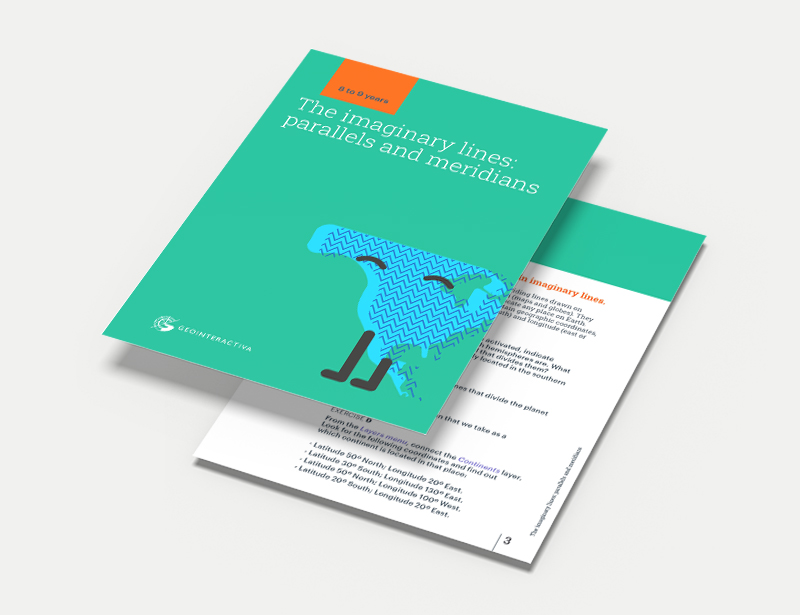
primary (8-9 years old).
Parallels and meridians of the Earth
In this activity, you will discover the importance of understanding the imaginary lines we draw around the planet, such as parallels and meridians, to comprehend how the Earth’s geographic coordinate system works. In this article, we will explain the significance of teaching children about these imaginary lines and how to do it effectively.
In this downloadable resource, you will find a PDF with instructions to liven up your classes. On one hand, we’ll show you which platform tool you’ll be working with, and on the other hand, we’ll suggest activities suitable for 8-9-year-old students.
Do you want your classes to be stimulating? Start today with GeoInteractive.
we suggest teaching geography in a fun way
What will your students learn from this educational activity?
What are parallels and meridians?
Parallels and meridians are the imaginary lines that are drawn on maps and globes to help locate places on Earth. Parallels are horizontal lines that run from east to west and measure the north or south distance from the equator. The equator is the zero parallel, which divides the Earth into two hemispheres: the northern hemisphere and the southern hemisphere.
On the other hand, meridians are vertical lines that run from north to south and measure the east or west distance from the Greenwich meridian. The Greenwich meridian is the zero meridian, which divides the Earth into two hemispheres: the eastern hemisphere and the western hemisphere.
The importance of knowing parallels and meridians
Knowing parallels and meridians is essential to understand how the geographic coordinate system works and to be able to locate any place in the world accurately. For example, if we want to search for the city of New York, we can use the geographic coordinates 40.7128° N, 74.0060° W, which indicates that the city is located at 40.7128 degrees north of the equator and 74.0060 degrees west of the Greenwich meridian.
In addition, understanding how parallels and meridians are drawn allows us to better understand the distribution of climates and time zones. For example, parallels near the equator experience warm and humid temperatures, while parallels near the poles experience cold and dry temperatures. On the other hand, meridians allow us to understand how the time zone system works, where each meridian has a different time.
How to teach parallels and meridians
It is important to use simple and clear language when explaining the concepts of parallels and meridians. For example, you can say that parallels are like belts that surround the Earth and measure the north or south distance from a place to the equator, while meridians are like rays that go from the North Pole to the South Pole and measure the east or west distance from a place to the Greenwich meridian. It is also recommended to use visual resources such as maps, globes, and practical exercises to help students better understand these concepts.
To teach children about parallels and meridians, it is important to use visual materials and concrete examples. For example, you can use the “Meridians and Parallels” layer of Geointeractiva, with the blank map, so that children can see clearly how these imaginary lines are drawn, without other distracting information. You can also use examples of familiar places, such as the city where they live or the city that is on the same latitude as theirs.
Conclusions
In conclusion, knowledge of parallels and meridians is essential for primary school children in their learning of geography. Understanding how geographic coordinates are divided and their application in locating places and understanding cultural and climatic differences are key elements for the formation of a global and comprehensive education. By developing a solid understanding of the imaginary lines that surround our planet, students will be better prepared to tackle more complex and advanced topics in geography, history, and science in the future.